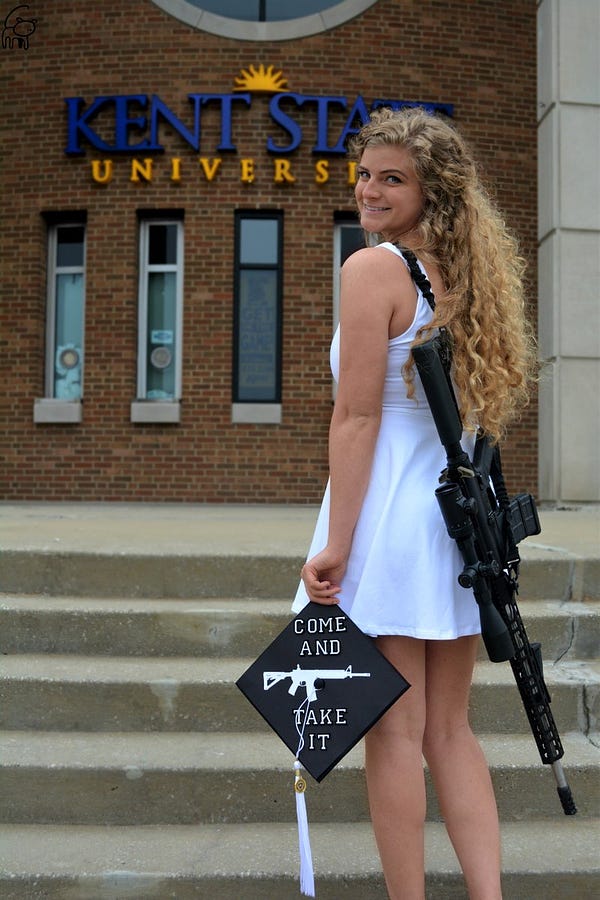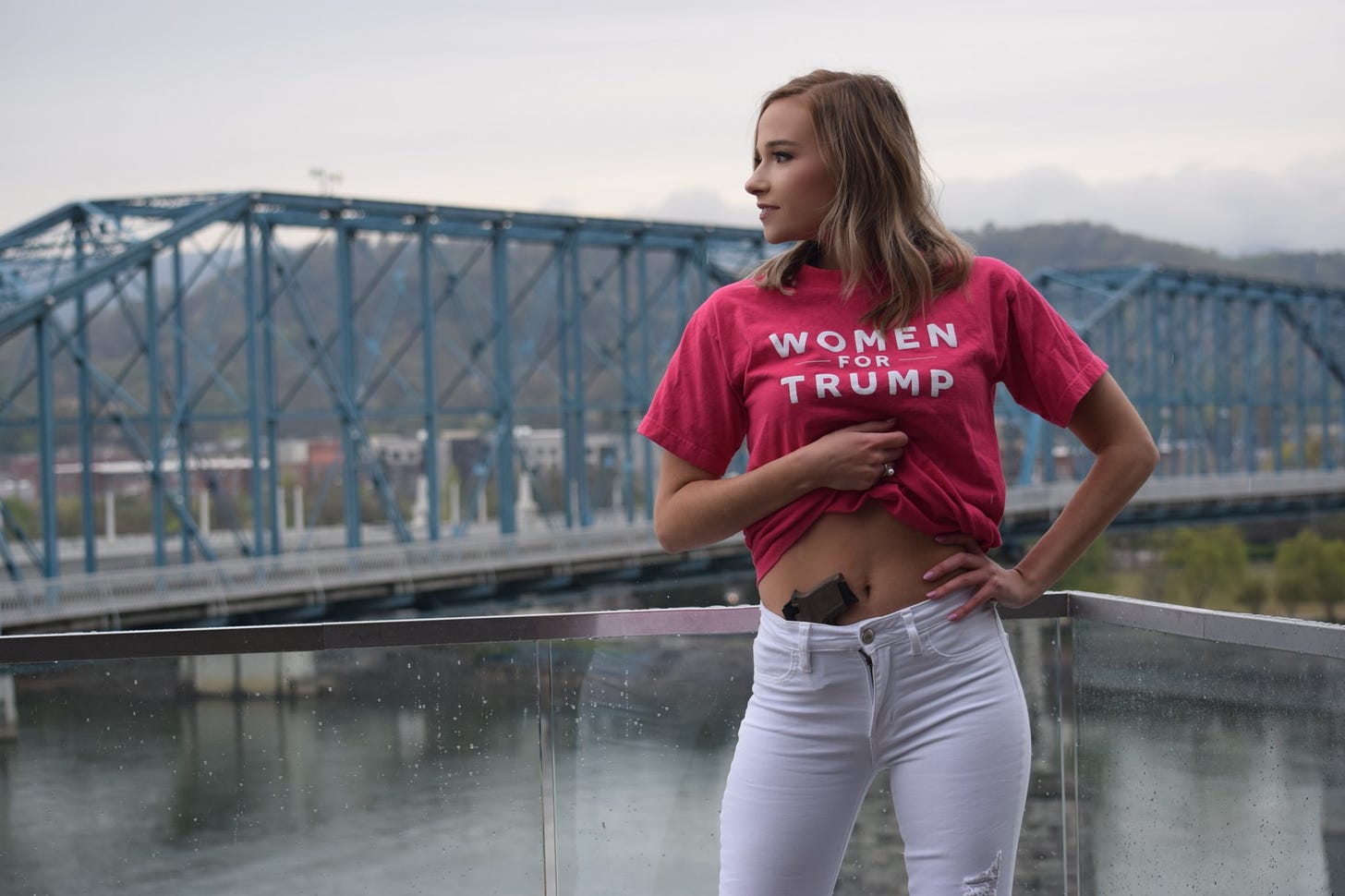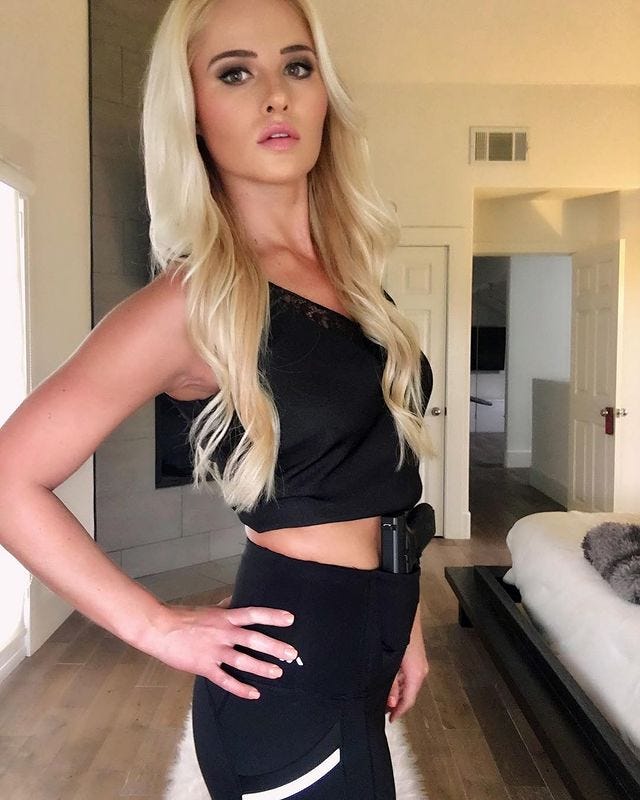Guns And High Heels - Why More Women in America Are Buying Guns
Studies indicate that women are buying guns for protection. Clever marketing techniques have also influenced them.
During October to November in 2016, the seven states (plus the District of Columbia) where Hillary won with a huge margin saw a 20.6% increase in background checks against a 4.5% increase in the top 19 Republican states. It is likely that the increase is due to minorities “buying guns out of fear of a Trump presidency.” Gun stores told NBC News that they saw four times as many black and minority customers after election day.
Another group that has experienced a huge spike in gun ownership, but for different reasons, is women. It is the fastest growing gun demographic in the country that is between 12 to 17 million strong.
Handgun sales are the heart of the $51 billion industry and $43% of gun owners who have only handguns are female. In Texas, the center of American gun culture, women hold 250,000 of the 1 million licenses issued to carry handguns. Utah experienced a similar trend. Of the 30,000 concealed carry permits issued in 2017, over 65% went to women, highest in 10 years.
According to a study by Harvard, the number of women who own guns has gone up by 5 million over the last two decades from 9% to 12% of all women in America (the rate of male gun owners dropped during the same time).
“More women are buying more guns, and more of them are buying guns for self-protection,” notes Aimee Huff, a lecturer at Oregon State University who studies the industry’s marketing techniques.
A recent graduate of Florida State University, Shayna Lopez-Rivas got a gun after she was attacked. The 23-year-old inherited anti-gun views from her family but her attitude changed after she was raped on campus in 2014. “I had pepper spray, he had a knife,” Lopez-Rivas said. “I wasn’t fast enough or strong enough.” She felt empowered when she picked up a gun for the first time. “As much as women are equal to men in every other way, the truth is that in a biological sense we’re not equal. They’re bigger, faster, stronger. We need to find something that is an equalizer. And for me that equalizer was a firearm.”
Dion, 35, from California purchased a handgun after someone attempted to rob her. “That’s when I decided I do need to empower myself,” said Dion. “Owning a gun has made me feel more comfortable. I really do think it’s an equalizer.”
Part of this trend is to do with the attitudinal shifts since 2000. Back then only 35% of all respondents said that “guns in the home made them safer.” By the end of 2014, however, 63% of people thought that guns are better for safety including 41% Democrats. A 2012 survey by Pew revealed that 40% of women thought “that owning a gun is more likely to protect someone from crime than to put their safety at risk.” It went up to 51% in 2014. Another survey by Pew published in 2017 revealed that women were more likely to keep a gun only for self protection: “While 27% of women say protection is the sole reason they own a gun, only 8% of men say the same.”
It is not that a large chunk of women were able to deter predators by using a gun that led to the change. Most women interviewed by VICE News for a documentary exploring the rise in female gun culture said that they never had to use their firearm. In fact, a analysis from Harvard University reported that “people defended themselves with a gun in nearly 0.9 percent of crimes from 2007 to 2011.”
One study that is often touted by gun control advocates is the analysis conducted by Violence Policy Center last year in which the Center looked at FBI homicides data from 2015 and determined that “women were over 100 times more likely to be murdered by a man with a gun than to use it to kill a man in self-defense.” Critics of the study pointed out that the data does not include “incidents where a woman may have otherwise used a gun to defend herself without killing the male attacker—either by non-fatally wounding him, or just waving the gun around.” Another valid critique of the report is that it failed to identify how many of those women were carrying firearms because it is very plausible that the number of women who were killed by a man with a gun would be considerably lower if most of those women were armed. Unfortunately the Center’s report did not contain that data.
Still, actual cases of women using a gun to protect themselves are few and far between. So what gives?
Gun sales were down for the eighth consecutive year in 2008 and “the industry realized, OK, we need to keep growing,” Huff said. “Women were a logical next step” to recover the lost market share. The new strategy had a “powerful ripple effect: In many households women have a “veto vote” on purchases” wrote a writer for GLAMOUR magazine. “Getting more women on board... may bring along more men too.”
Just 500 women participated in NRA boot camps in 2000 but that mushroomed to 13,000 women by 2014. That is due to people like Carrie Lightfoot from Arizona who launched a chapter program in 2013 to recruit new women to gun ranges. In just one year, thanks to support by Industry executives, her program, The Well Armed Woman, went national with 400 chapters and 12,000 members. Lightfoot collaborated with LWRC to create the first AR-15 with input from women.
The rise of Lightfoot came around the time when many other female gun enthusiasts were establishing their own brands like Girl’s Guide to Guns and A Girl & a Gun. The secret to their success was the internet.
Mainstream channels like NBC have policies against gun advertisements on their network but the industry preempted the media embargo through social media. In 2012, the NRA spent no more than a few hundred dollars on online ads but that number skyrocketed to $4 million by June 2018 and those ads were viewed 600 million times.
In one ad, conservative commentator and Fox News contributor Tomi Lahren posted a selfie on Instagram with a handgun tucked into her yoga pants. The post said: “Ladies, chances are your assailant is gonna be bigger, stronger and faster and that’s why you have @alexoathletica for your gun.” The post was a promotion for Alexo Athletica which sells gun friendly sportswear.
Girls on social media soon followed suit. In April, Brenna Spencer got a lot of attention after she tweeted her graduation photo in a “Women for Trump” top with a handgun tucked into her jeans. Then in May, Kaitlin Marie’s graduation photo on Twitter went viral in which a semi-automatic rifle was strapped around her back. Her tweet said, “As a woman, I refuse to be a victim & the second amendment ensures that I don’t have to be.”


Critics, however, were not swayed. Jessica Valenti wrote in the Guardian that “the NRA wants us to believe that guns protect the most vulnerable among us, instead of realizing the truth – that they kill the most vulnerable.”
Valenti is talking about the issue of mass shootings and gun crime in general because guns are so widely available in America that many deranged individuals are able to obtain them often without even the smallest of scrutiny. That has led to enormous amounts of gun violence on women alone: 50 women are shot every month by current or former partners and American women are 16 times more likely to be killed by a gun than women in other developed countries.
“Are gun deaths the price of admission for living in America”? asked a VICE News reporter to NRA Instructor Tiffany Johnson.
“If I had to choose between risking the chance that some other person might misuse a right that I enjoy versus me giving up that right altogether for myself? I wouldn't choose to give up the right for myself.”



